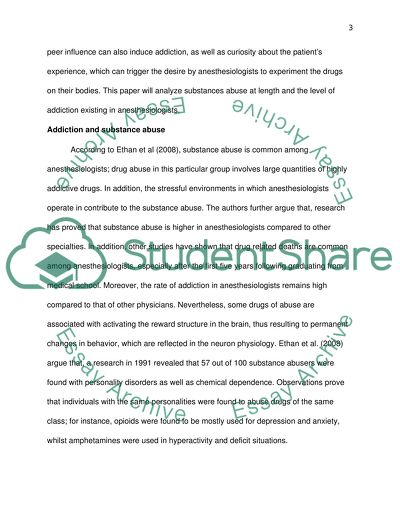Cite this document
(“Addiction and Substance Abuse in Anesthesiologists Research Paper”, n.d.)
Addiction and Substance Abuse in Anesthesiologists Research Paper. Retrieved from https://studentshare.org/psychology/1437095-addiction-and-substance-abuse-in-anesthesiologists
Addiction and Substance Abuse in Anesthesiologists Research Paper. Retrieved from https://studentshare.org/psychology/1437095-addiction-and-substance-abuse-in-anesthesiologists
(Addiction and Substance Abuse in Anesthesiologists Research Paper)
Addiction and Substance Abuse in Anesthesiologists Research Paper. https://studentshare.org/psychology/1437095-addiction-and-substance-abuse-in-anesthesiologists.
Addiction and Substance Abuse in Anesthesiologists Research Paper. https://studentshare.org/psychology/1437095-addiction-and-substance-abuse-in-anesthesiologists.
“Addiction and Substance Abuse in Anesthesiologists Research Paper”, n.d. https://studentshare.org/psychology/1437095-addiction-and-substance-abuse-in-anesthesiologists.


